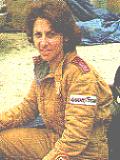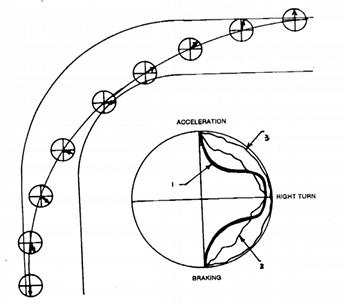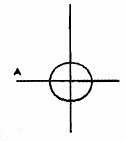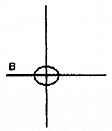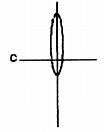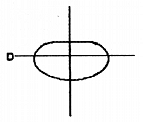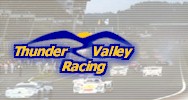

|
www.thundervalleyracing.com
|
|
The Friction Circle |
|
|
Part
3 of a series of technical articles
In the article about tires, I defined some terms common to tire
performance. Briefly: In racing, the car is rarely doing only one of these. (All courtesies to the drag racers reading this.) We brake and turn-in. We accelerate and turn-out. We ask the tires to perform multiple tasks simultaneously in tight corners, through increasing radius turns, and in passing maneuvers. The limits of adhesion in these different situations can be described on a graph known as the friction circle. Imagine you are in your race car in the center of a circle. The horizontal axis is cornering, the vertical axis is acceleration and braking. The circle describes all available traction potential in every direction. If the tire has 1g of available force for acceleration, and that same 1g of force for cornering, it will not be able to do both these things at the same time. But it can develop a reduced degree of adhesion for each. In combining functions there will be a trade off. If more adhesion is needed for tighter cornering, there is less stick available for acceleration. Ease off the throttle while adding steering. If all the tire's adhesion is used in threshold braking there is little for cornering, modulating the brake pressure allows for steering input. These functions delineate the arc of the circle. Acceleration and cornering the upper, decelerating (braking) and cornering the lower.
Diagram of a corner taken three
ways: Finding that limit, and driving on that limit requires smooth transitions and sensitivity to the cars weight distribution. If we could see the arc graph for a given corner taken perfectly, at the limit of adhesion, and compare it to a graph of the corner taken with errors in braking, steering, shifting and acceleration, we would recognize how the car was tossed off balance and where lap times were lost, and where to improve. References to the concept of the friction circle first appeared in SAE papers ("Motions of Skidding Automobiles" by Radt and Milliken) in the early 1960's. In the next few years the theories were being tested by Mark Donahue for General Motors, and Jim Hall at Chaparral Racing Cars. At first, the test equipment was awkward and expensive. Now, acquiring race information through telemetry and computers is becoming commonplace for amateur club racers. Defining Terms I’d like to spend the remainder of this article defining some terms I will be using in future articles as we are talking about handling characteristics and suspension components. I also want to point out that each one of you is driving a different type of racer, at different levels of development, and while the concepts are similar in all race cars, how we use the information will differ and there is no one right answer for all. Testing provides the most important input. When you test, do not be apprehensive to make a change. But change only one thing at a time, record the results, and re-test. Set-Up Proper set-up of your race car for a given track is necessary in order to be competitive. With so many different adjustable components, and the interaction of the various systems, it can be difficult to know just where to start. First we need to familiarize ourselves with these systems and how they affect handling. We’ll talk about: suspension; aerodynamics; power plant; and brakes. Handling shows how well the car utilizes the potential power it has available. Some cars handle so erratically they cannot use the maximum their power plant can produce. Other cars handle so well that they are running at maximum output all the time. Set up is finding that point where the car is balanced, stable and predictable. Friction Circle Diagrams A. A typical sedan on street tires and not much power will produce a nearly uniform diagram in all directions.
B. That same car in wet conditions, traction reduced, will produce a smaller friction circle. C. A car set up for drag racing will show a lot of acceleration power, but with skinny front tires will have limited handling capabilities. D. A low powered Formula Ford on racing slicks, will show a lot of traction for cornering, but acceleration will be limited. Glossary of Terms center of gravity - the point where the car’s mass can be lifted and balanced. power plant - from air-fuel intake to exhaust, gearbox, differential and drive shafts. g - a unit of measurement, force which gravity exerts on the earth. weight transfer - change in tire download that results from acceleration, braking, turning. Changes in weight transfer causes body roll. roll - movement of the car which changes the ride height on the left or right of the centerline. As the chassis rolls in a turn, it pivots about the roll axis. roll center - the geometric balance point about which the sprung mass at that end of the chassis will roll. There is a front and a rear roll center, the line between them is the roll axis. ride height - the distance from ground level to the frame, as the car is raced. The front and rear ride height can be different. sprung weight - chassis and all components mounted to the chassis. unsprung weight - moving suspension parts, wheels, tires, outboard brakes. Some components are shared, attached to the chassis and the suspension, such as shocks. This weight is what the shocks control in order to keep the tires in with the road. yaw angle - the angle between the centerline of the car and the direction the car is traveling when cornering. Going Faster From the beginning - I’ll assume that everyone has analyzed what their car is doing and has approached various developmental changes. Your car is probably handling well and you have a good understanding of weight transfer, oversteer, understeer and driving skills. If the question is how to go faster, I would ask: Are you driving up to the car’s capabilities? If yes, then what is the car doing that is slowing you down? Visualize your last few laps. Now lets look at the chassis. Is it clean, no cracks, no rust, no undercoat, no leaks, no taped body work? Is everything bolted down with at least grade 8 hardware, washers and locknuts, safety wired? Are there three or four or more washers on bolts that should be shorter, and at least two complete threads outside the nut? Are attachments points tight, with no play in the suspension parts, no cracked CV boots? Do you have at least a page in you notebook on the last complete alignment specs - caster, camber, toe, ride height, rake and corner weights?
|
|
Home
| Member Area
|Meet the Racers
| Features | News Articles
Sponsorship
| Press Room
| Resources
| About Us
| Contact Us
|

